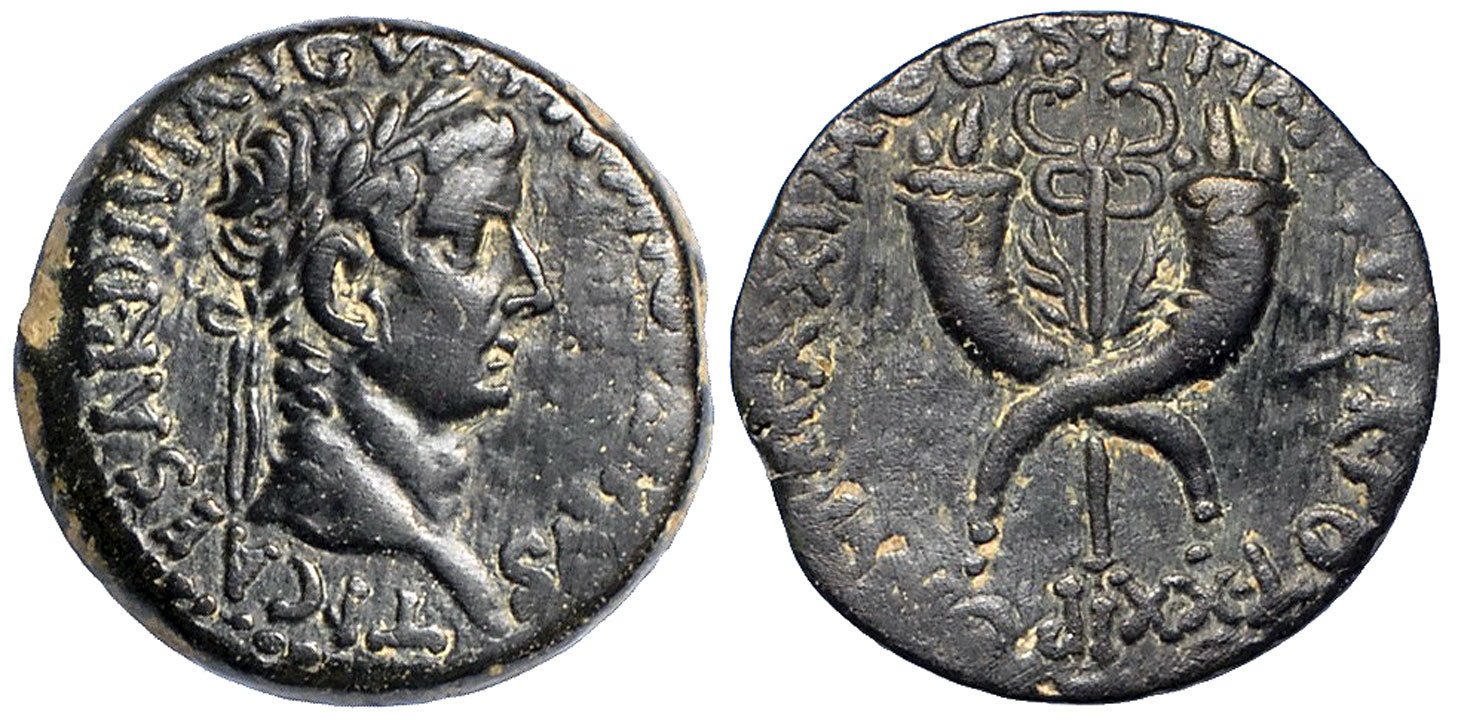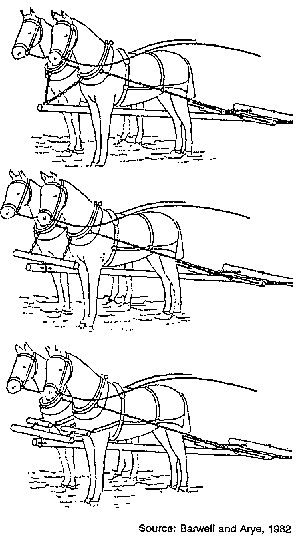
 |
Freethought & Rationalism ArchiveThe archives are read only. |
|
|
#11 |
|
Veteran Member
Join Date: Jun 2010
Location: seattle, wa
Posts: 9,337
|
What I am thinking then is that the Cross was understood to be two beams - one traversed in the relation to the other (= ניר). And this symbolism of the Cross was understood to relate back ultimately to the tabernacle because the cherubim in the holy of holies looked compatible with ancient depictions of the caduceus - i.e. (salitre) cross like.
  The symbolism then was that the Cross was two things 'yoked' together and in turn the individual on the Cross was yoked by the Cross and united with Jesus. |
|
|
|
|
#12 |
|
Veteran Member
Join Date: Jun 2010
Location: seattle, wa
Posts: 9,337
|
I think that Clement's Exhortation is sometimes acknowledged to be earlier than Irenaeus's Against Heresies - at least by a few years.
|
|
|
|
|
#13 | |
|
Banned
Join Date: Apr 2004
Location: Alberta
Posts: 11,885
|
Quote:
Original sin is singular in earthliness that makes us hu-man (from humi) as if torn between our left and right to so be the cross that we die on as Jesuit in the manner of Jesus. My mother-in-law looked for cake recipes in the bible so she to try them to see. |
|
|
|
|
|
#14 | |
|
Veteran Member
Join Date: Jun 2010
Location: seattle, wa
Posts: 9,337
|
So what I am proposing is that if the original Cross was saltire (X-like as Justin thinks it was) I wonder whether the 'yoked-ness' was more pronounced. A man strapped onto that X shape has even more interesting possibilities. Justin says:
And the scientific discussion of the Son of God in his Timaeus – when he says: “He arranged him as an X in the cosmos” – Plato took from Moses, and spoke in similar terms. – Justin Martyr, Apology on Behalf of Christians or as it is translated in the Schaff collection: Quote:
Another point that just struck me. Most of us take Justin's claims to be silly - i.e. that there is no basis for interpreting the Jewish narrative 'Platonically.' But let's reevaluate that for a second. The LXX translation of Gen. 1 :2 as "invisible and unformed" καὶ ἀόρατος καὶ ἀκατασκεύαστος no doubt suggested the correspondence with Timaeus 51a, "invisible and formless" (ἀόρατος καὶ ἄμορφος). |
|
|
|
|
|
#15 | |
|
Banned
Join Date: Apr 2004
Location: Alberta
Posts: 11,885
|
Quote:
|
|
|
|
|
|
#16 | ||
|
Veteran Member
Join Date: Jun 2010
Location: seattle, wa
Posts: 9,337
|
Arthur Droge on this material
It should be noted Plato had actually 'read' Moses occurs in the next chapter of l Apologia. Here Justin claims that 'the physiological discussion concerning the son of god in the Timaeus of Plato, where he says, "He placed crosswise in the universe,' he [Plato] likewise took from Moses" (Apol. i.60.1). Justin has in mind, of course, the account of Moses' bronze snake in Num. 21:6-9, "which Plato read, and not clearly understanding nor realizing that it was a type of the cross, but thinking that it was a placing crosswise, said that the power next to the first god was placed crosswise in the universe" (Apol. i.60.5). Just what passage of the Timaeus Justin is alluding to here is something of a problem. In the editions of Otto and Goodspeed reference is made to Tim. 36bc, where Plato describes how the demiurge placed the world soul in the universe in the form of the Greek letter chi. But, as Andresen has suggested, Justin may be combining two passages: Tim. 36b and 34ab. The latter contains a reference to the world soul as "the coming god," whom Justin equates with "the son of god" (i.e., Christ). Justin then goes on to assert that Plato also spoke of a third god: Quote:
Quote:
|
||
|
|
|
|
#17 |
|
Veteran Member
Join Date: Jun 2010
Location: seattle, wa
Posts: 9,337
|
The point of all this is to establish that if - as Droge suggests - Justin's ideas here are not from one passage in the Timaeus but spread over a wealth of material, there is an interesting use of 'yoke' in the Timaeus which might be pertinent to our discussion.
It should also be noted that the same Christian interpretation from the Timaeus and the Second Epistle is ridiculed by Celsus in Origen's summary of his work. Bucur also traces the doctrine to the writings of Clement which means it wasn't isolated to one writer but was characteristic of second century Christianity. I should also note that Philo and Marqe demonstrate that the Platonizing of the Bible wasn't limited to Christians. Instead Christianity emerged in an age where it was taken for granted that the Pentateuch was compatible with Platonism - undoubtedly because according to the consensus Plato 'stole' from Moses. |
|
|
|
|
#18 | |
|
Banned
Join Date: Apr 2004
Location: Alberta
Posts: 11,885
|
Quote:
Parting the water is just opposite to walking on water, which is like making a forceful entree that I call spiritual rape. It sounds miraculous, but maybe just a little too tall to be true. What actually happened here is that the hymen (green veil) between his left and his right got torn, which for Plato's Cave dweller would by like peeking outside and be dazzled by the light. It is the Green Wall in Zamjatin's "WE" (Record 8 second page) This so equals parting the water and he had no choice but live with it for the rest of his life, now with the great divide remaining between them, by which he will remain torn between heaven and earth for the rest of his days. The road Moses took is also known as Transavenue 49, = directly to Jesus from the first sign of trouble in life; yes you guessed, ask Billy & co as they all know how it is done. But fail to realize that they become lost like a yellow streak in the desert, similar to what JohnB was all about in Mark. Note that his transfiguration had only scorched his hair and made him look old instead of younger, while Plato goes searching for destiny from insight to insight (from ouisa to ousia) each with glow of their own (and not looking for bible passages, to be sure). So there is noting wrong with the man, nor with his assets and possession, except that their glow just does not shine like they once did. This then is why the shepherds were, taking turns, NB, herding their sheep in the middle of a midwinter night, and it was then that par-ousia came his way and now the glow was his, that so put a shine on his face to never leave him again. Parousia here is Plato's Final Form in the making equal to Christ-mass as we know it (no birthday party for sure). In essence we enounter Logos here that was prior to us, and hence the Son of God is is the foundation of all that we are. We so now actualize our condition neologically in that we are prior to our human condition as man for whom the glows were fading paleological into yesteryear when the search for destiny began. |
|
|
|
|
|
#19 | |
|
Veteran Member
Join Date: Jun 2010
Location: seattle, wa
Posts: 9,337
|
Maybe I get too carried away. But I have been going back to the original point of the thread and see this:
Quote:

|
|
|
|
|
|
#20 |
|
Veteran Member
Join Date: Jun 2010
Location: seattle, wa
Posts: 9,337
|

|
|
|
| Thread Tools | Search this Thread |
|